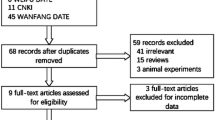Abstract
Systemic lupus erythematosus (SLE) is an autoimmune disease characterized by familial aggregation and genetic predisposition. MicroRNAs (MiRNAs) serve as critical biomarkers in lupus patients because of their aberrant expression in different SLE stages. The study aimed to investigate the correlation of miR-31 and miR-21 with IL-2 in SLE patients as regulatory biomarkers in the activation of T lymphocytes of Egyptian lupus patients. Quantitative RT-PCR is carried out to estimate the expressions of miR-31 and miR-21, and IL-2 levels were determined using ELISA in plasma of 40 patients with SLE, 20 of their first-degree relatives and 20 healthy controls. The study also determined the systemic lupus erythematosus disease activity index (SLEDAI) score and proteinuria in SLE patients. The results revealed that miR-31 was lower expressed, while miR-21 was high expressed in SLE patients compared to their first-degree relatives and controls. MiR-31 was negatively correlated with SLEDAI and proteinuria in lupus patients, while miR-21 showed positive correlation with them. Also we found that there is a significant positive correlation between miR-31 and IL-2 in SLE patients, while miR-21 was negatively correlated with IL-2 level in patients. In conclusion, the study disclosed a significant association between miR-31 and miR-21 expression with IL-2 level in SLE patients. The regulatory biomarkers of miR-31 and miR-21 might have an impact on regulating IL-2 pathway expression and in turn on the activation of T lymphocytes in SLE.




Similar content being viewed by others
References
Ramos PS, Brown EE, Kimberly RP, Langefeld CD (2010) Genetic factors predisposing to systemic lupus erythematosus and lupus nephritis. Semin Nephrol 30(2):164–176
Qu B, Shen N (2015) MiRNAs in the pathogenesis of systemic lupus erythematosus. Int J Mol Sci 16(5):9557–9572
Xiao G, Zuo X (2016) Epigenetics in systemic lupus erythematosus. Biomed Rep 4(2):135–139
Hochberg MC (1987) The application of genetic epidemiology to systemic lupus erythematosus. J Rheumatol 14:867–869
Alarcón-Segovia D, Alarcón-Riquelme ME, Cardiel MH, Caeiro F, Massardo L, Villa AR, Pons-Estel BA, GrupoLatinoamericano de Estudio del Lupus Eritematoso (GLADEL) (2005) Familial aggregation of systemic lupus erythematosus, rheumatoid arthritis, and other autoimmune diseases in 1,177 lupus patients from the GLADEL cohort. Arthritis Rheum 52(4):1138–1147
Masi AT, Kaslow RA (1978) Sex effects in systemic lupus erythematosus: a clue to pathogenesis. Arthritis Rheum 21:480–484
Lu LJ, Wallace DJ, Ishimori ML, Scofield RH, Weisman MH (2010) Male systemic lupus erythematosus: a review of sex disparities in this disease. Lupus 19:119–129
Murphy G, Isenberg D (2013) Effect of gender on clinical presentation in systemic lupus erythematosus. Rheumatology 52:2108–2115
Bartel DP (2004) MicroRNAs: genomics, biogenesis, mechanism, and function. Cell 116:281–297
Baek D, Villen J, Shin C, Camargo FD, Gygi SP, Bartel DP (2008) The impact of microRNAs on protein output. Nature 455:64–71
Mehta A, Baltimore D (2016) MicroRNAs as regulatory elements in immune system logic. Nat Rev Immunol 16(5):279–294
Stypińska B, Paradowska-Gorycka A (2015) Cytokines and MicroRNAs as candidate biomarkers for systemic lupus erythematosus. Int J Mol Sci 16(10):24194–24218
Husakova M (2016) MicroRNAs in the key events of systemic lupus erythematosus pathogenesis. Biomed Pap Med Fac Univ Palacky Olomouc Czech Repub. doi:10.5507/bp.2016.004
Martínez-Ramos R, García-Lozano JR, Lucena JM, Castillo-Palma MJ, García-Hernández F, Rodríguez MC, Núñez-Roldán A, González-Escribano MF (2014) Differential expression pattern of microRNAs in CD4+ and CD19+ cells from asymptomatic patients with systemic lupus erythematosus. Lupus 23(4):353–359
Liu YJ, Fan WJ, Bai JZ (2015) MicroRNA-126 expression and its mechanism of action in patients with systemic lupus erythematosus. Eur Rev Med Pharmacol Sci 19(20):3838–3842
Tang Y, Luo X, Cui H, Ni Z, Yuan M, Guo Y et al (2009) MicroRNA-146A contributes to abnormal activation of the type I interferon pathway in human lupus by targeting the key signaling proteins. Arthritis Rheum 60(4):1065–1075
Hai-yan W, Yang L, Mei-hong C, Hui Z (2011) Expression of MicroRNA-146a in peripheral blood mononuclear cells in patients with systemic lupus erythematosus. Zhongguo Yi XueKeXue Yuan XueBao 33(2):185–188
Pan W, Zhu S, Yuan M, Cui H, Wang L, Luo X, Li J, Zhou H, Tang Y, Shen N (2010) MicroRNA-21 and microRNA-148a contribute to DNA hypomethylation in lupus CD4+ T cells by directly and indirectly targeting DNA methyl transferase 1. J Immunol 184(12):6773–6781
Fan W, Liang D, Tang Y, Qu B, Cui H, Luo X et al (2012) Identification of microRNA-31 as a novel regulator contributing to impaired interleukin-2 production in T cells from patients with systemic lupus erythematosus. Arthritis Rheum 64(11):3715–3725
Garchow B, Kiriakidou M (2016) MicroRNA-21 deficiency protects from lupus-like autoimmunity in the chronic graft-versus-host disease model of systemic lupus erythematosus. Clin Immunol 162:100–106
Lieberman LA, Tsokos GC (2010) The IL-2 defect in systemic lupus erythematosus disease has an expansive effect on host immunity. J Biomed Biotechnol 2010:740619
Burchill MA, Yang J, Vogtenhuber C, Blazar BR, Farrar MA (2007) IL-2 receptor and β-dependent STAT5 activation is required for the development of Foxp3+ regulatory T cells. J Immunol 178:280–290
Liao W, Lin JX, Leonard WJ (2013) Interleukin-2 at the crossroads of effector responses, tolerance, and immunotherapy. Immunity 38:13–25
Schorle H, Holtschke T, Hünig T, Schimpl A, Horak I (1991) Development and function of T cells in mice rendered interleukin-2 deficient by gene targeting. Nature 352(6336):621–624
Horak I (1995) Immunodeficiency in IL-2-knockout mice. Clin Immunol Immunopathol 76(3 Pt 2):S172–S173
Horwitz DA (2010) The clinical significance of decreased T cell interleukin-2 production in systemic lupus erythematosus: connecting historical dots. Arthritis Rheum 62(8):2185–2187
Tan EM, Cohen AS, Fries JF, Masi AT, McShane DJ, Rothfield NF, Schaller JG, Talal N, Winchester RJ (1982) The 1982 revised criteria for the classification of systemic lupus erythematosus. Arthritis Rheum 25:1271–1277
Bombardier C, Gladman DD, Urowitz MB, Caron D, Chang DH, The Committee on Prognosis Studies in SLE (1992) Derivation of the SLEDAI: a disease activity index for lupus patients. Arthritis Rheum 35:630–640
Firestein GS (2008) Kelley’s textbook of rheumatology. W. B Saunders, Philadelphia
Chafin CB, Reilly CM (2013) MicroRNAs implicated in the immunopathogenesis of lupus nephritis. Clin Dev Immunol 2013:430239
Yan S, Yim LY, Lu L, Lau CS, Chan VS (2014) MicroRNA regulation in systemic lupus erythematosus pathogenesis. Immune Netw 14(3):138–148
Miao CG, Yang YY, He X, Huang C, Huang Y, Zhang L, Lv XW, Jin Y, Li J (2013) The emerging role of microRNAs in the pathogenesis of systemic lupus erythematosus. Cell Signal 25(9):1828–1836
Fan W, Liang D, Tang Y, Qu B, Cui H, Luo X, Huang X, Chen S, Shen N (2011) Expression of miR-31 in peripheral blood of patients with systemic lupus erythematosus. J Shanghai Jiaotong Univ 31:39–42
Song YC, Tang SJ, Lee TP, Hung WC, Lin SC, Tsai CY, Ng WV, Wu MF, Sun KH (2010) Reversing interleukin-2 inhibition by anti–double-stranded DNA autoantibody ameliorates glomerulonephritis in MRL-lpr/lprmice. Arthritis Rheum 62:2401–2411
Tsokos GC (2011) Disease pathogenesis: systemic lupus erythematosus. N Engl J Med 365:2110–2121
Mellor-Pita S, Citores MJ, Castejon R, Tutor-Ureta P, Yebra-Bango M, Andreu JL, Vargas JA (2006) Decrease of regulatory T cells in patients with systemic lupus erythematosus. Ann Rheum Dis 65:553–554
Wong CK, Lit LC, Tam LS, Li EK, Wong PT, Lam CW (2008) Hyperproduction of IL-23 and IL-17 in patients with systemic lupus erythematosus: implications for Th17-mediated inflammation in autoimmunity. Clin Immunol 127:385–393
Webster KE, Walters S, Kohler R, Mrkvan T, Boyman O, Surh CD, Grey ST, Sprent J (2009) In vivo expansion of Treg cells with IL-2 mAb complexes; induction of resistance to EAE and long-term acceptance of islet allografts without immunosuppression. J Exp Med 206:751–760
Sgouroudis E, Kornete M, Piccirillo CA (2011) IL-2 production by dendritic cells promotes Foxp3 + regulatory T-cell expansion in autoimmune resistant NOD congenic mice. Autoimmunity 44:406–414
Matsuoka K, Koreth J, Kim HT, Bascug G, McDonough S, Kawano Y et al (2013) Low-dose interleukin-2 therapy restores regulatory T cell homeostasis in patients with chronic graft-versus-host disease. Sci Transl Med 5:179ra43
Mizui M, Koga T, Lieberman LA, Beltran J, Yoshida N, Johnson MC, Tisch R, Tsokos GC (2014) Interleukin-2 protects lupus-prone mice from multiple end organ damage by limiting CD4−CD8—Interleukin-17-producing T cells. J Immunol 193:2168–2177
Xue F, Li H, Zhang J, Lu J, Xia Y, Xia Q (2013) MiR-31 regulates interleukin 2 and kinase suppressor of ras 2 during T cell activation. Genes Immun 14(2):127–131
Helms WS, Jeffrey JL, Holmes DA, Townsend MB, Clipstone NA, Su L (2007) Modulation of NFAT-dependent gene expression by the RhoA signaling pathway in T cells. J Leukoc Biol 82:361–369
Crispin JC, Tsokos GC (2009) Transcriptional regulation of IL-2 in health and autoimmunity. Autoimmun Rev 8(3):190–195
Shaw JP, Utz PJ, Durand DB, Toole JJ, Emmel EA, Crabtree GR (1988) Identification of a putative regulator of early T cell activation genes. Science 241:202–205
Rooney JW, Sun YL, Glimcher LH, Hoey T (1995) Novel NFAT sites that mediate activation of the interleukin-2 promoter in response to T-cell receptor stimulation. Mol Cell Biol 15:6299–6310
Chow CW, Rincon M, Davis RJ (1999) Requirement for transcription factor NFAT in interleukin-2 expression. Mol Cell Biol 19:2300–2307
Garchow BG, BartulosEncinas O, Leung YT, Tsao PY, Eisenberg RA, Caricchio R, Obad S, Petri A, Kauppinen S, Kiriakidou M (2011) Silencing of microRNA-21 in vivo ameliorates autoimmune splenomegaly in lupus mice. EMBO Mol Med 3(10):605–615
Stagakis E, Bertsias G, Verginis P, Nakou M, Hatziapostolou M, Kritikos H, Iliopoulos D, Boumpas DT (2011) Identification of novel microRNA signatures linked to human lupus disease activity and pathogenesis: miR-21 regulates aberrant T cell responses through regulation of PDCD4 expression. Ann Rheum Dis 70(8):1496–1506
Rouas R, Fayyad-Kazan H, El Zein N, Lewalle P, Rothé F, Simion A et al (2009) Human natural Treg microRNA signature: role of microRNA-31 and microRNA-21 in FOXP3 expression. Eur J Immunol 39(6):1608–1618
Chen C, Rowell EA, Thomas RM, Hancock WW, Wells AD (2006) Transcriptional regulation by Foxp3 is associated with direct promoter occupancy and modulation of histone acetylation. J Biol Chem 281:36828–36834
Murugaiyan G, da Cunha AP, Ajay AK, Joller N, Garo LP, Kumaradevan S, Yosef N, Vaidya VS, Weiner HL (2015) MicroRNA-21 promotes Th17 differentiation and mediates experimental autoimmune encephalomyelitis. J Clin Invest. 125(3):1069–1080
Acknowledgments
This study was funded by National Research Centre, Cairo, Egypt.
Author information
Authors and Affiliations
Corresponding author
Ethics declarations
Conflict of interest
The authors declare that they have no conflict of interest.
Ethical approval
All procedures performed in this study which involves human participants were in accordance with the ethical standards of the institutional and/or national research committee and with the 1964 Helsinki Declaration and its later amendments or comparable ethical standards.
Rights and permissions
About this article
Cite this article
Amr, K.S., Bayoumi, F.S., Elgengehy, F.T. et al. The role of microRNA-31 and microRNA-21 as regulatory biomarkers in the activation of T lymphocytes of Egyptian lupus patients. Rheumatol Int 36, 1617–1625 (2016). https://doi.org/10.1007/s00296-016-3550-z
Received:
Accepted:
Published:
Issue Date:
DOI: https://doi.org/10.1007/s00296-016-3550-z




